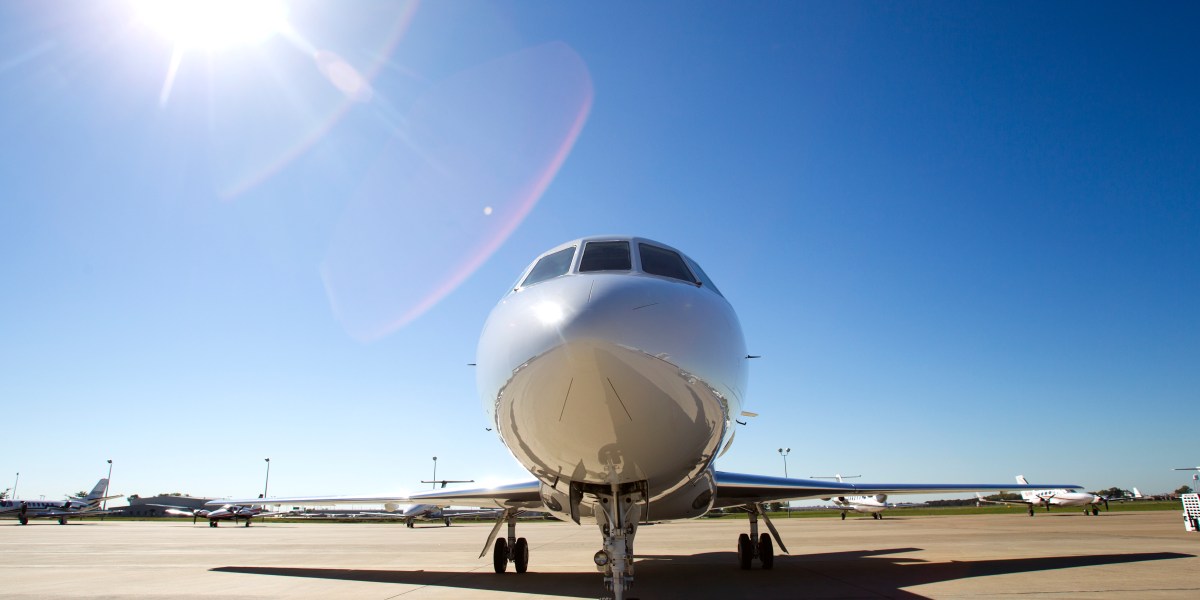As more companies demand that hapless employees return to the office five days a week—think of Amazon and Dell recently—a starkly different trend has gone unnoticed: The number of CEOs who live hundreds of miles from headquarters, typically flying to the office for a few days a week, has been increasing for years.
Recent comprehensive research finds that the arrangement generally doesn’t work well. Long-distance CEOs underperform on average. The research also confirms suspicions that many workers may have harbored about fly-in CEOs. For example: If they own a boat, they tend to underperform even worse. And if they live within ten miles of a really nice golf course? Don’t even ask.
A high-profile example of the super-commuter CEO—for whom it’s far too early to assess performance—is Brian Niccol, who in September left Chipotle to become Starbucks’ new chief. A Starbucks jet shuttles him between home in Newport Beach, California, and headquarters in Seattle, a distance of about 1,000 miles each way. He isn’t required to be in Seattle for any specific number of days per week.
Long-distance CEOs apparently increased during the pandemic, but they have been multiplying since long before. They more than doubled as a percentage of all public company CEOs, from 4% to 9.5%, between 2000 and 2019. So say Ran Duchin, a professor at Boston College, and Denis Sosyura, a professor at Arizona State University, in a deep study of the phenomenon. In total, 18% of public companies had a long-distance CEO for some part of that period—a total of 929 long-distance CEOs whom the researchers identified and studied.
The research is valuable because it examines how CEOs perform in that arrangement, and the answer is clear: On average, poorly. As soon as they take over as a long-distance chief, “there is a rapid and persistent decline in firm performance,” the researchers find. Return on assets drops, as does the company’s value. It isn’t because those CEOs are generally inept; some of them ran the same company while living near HQ and at another time as a remote boss, and they performed much better when they were nearby. Nor did evidence suggest the company was in trouble before the long-distance CEO took over. The problem seems to be the long-distance factor, and the longer the distance, the weaker the company’s performance under the fly-in CEO.
So why do boards of directors hire a CEO who lives far away and intends to stay there? The answer is ironic and kind of sad. The researchers find that long-distance CEOs are more likely than the local talent to have graduated from an Ivy League school and to have a graduate degree; they have more CEO experience, more external board seats, and a bigger network. If such a candidate insists on a superlong commute, the directors apparently feel the only way they can snag this fantastic leader is by agreeing. Yet on average, it’s all for naught.
Exactly why the super-commuters underperform isn’t clear, but for many of them concentrating on business may be tough. That’s because on average, home is especially alluring, and the company’s locale is especially not. For example, the researchers find, a company’s decline in operating performance almost doubles “for long-distance CEOs who own recreational boats.” It’s even worse for CEOs “who maintain their primary residence in a beach home.” (Fun fact: 15% of long-distance CEOs live within 440 yards of a beach.) Other irresistible time sinks may be far from any ocean. Notably, the decline in firm performance is “significantly stronger” for CEOs who live within 10 miles of one of Golf Digest’s Top 200 Courses.
Contrast those idyllic settings with the locations of many companies that recruit long-distance CEOs. The researchers reported at a recent Stanford University conference that “states with the highest fraction of long-distance CEOs in their firms are landlocked, rural, and cold” (Iowa, Kansas, North Dakota, Vermont, and Wyoming).
Signing up a long-distance CEO is often a promising achievement for a company, so it’s especially bitter that on average, the relationship ends badly. Fly-in CEOs’ tenures average 1.85 years shorter than CEO tenures broadly, and the CEOs are more likely to be terminated—fired or allowed to resign under pressure from the board. Leaving is often the most value-enhancing thing a long-distance CEO does. The stock jumps 2.5% on average when the company announces the departure.
It’s worth repeating that all the insights drawn from the data are based on averages and probabilities. No one should infer that all long-distance CEOs are underperformers who will have to be fired because they loved warm sand and cool drinks under tiki torches. But boards that want to hire a CEO who refuses to live anywhere near company headquarters should remember they’ll be betting against the odds.
